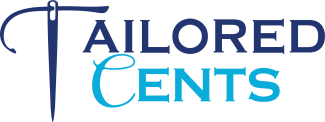
How High Earners Can Thrive Between Jobs: Smart Emergency Funds
As careers progress and responsibilities change, the way we think about financial security evolves.
When it comes to career transitions or even contemplating a career change, the financial safety net, specifically the emergency fund, gets a heightened priority.
Although the often-prescribed six months of emergency funds may seem arbitrary, this guideline is designed to offer a cushion during periods of income uncertainty.
The standard advice may not always apply for high earners.
Larger financial obligations, such as the demands of high costs of living areas, mortgages, family expenses, and lifestyle choices, require a more tailored approach.
Not only are the stakes higher, especially in tech and fast-growing industries, which are prone to rapid and unpredictable changes, but job security can also be more tenuous– the time between roles may be extended due to the specialized nature of the positions.
Critically, inflation erodes the purchasing power of your savings, and the rising cost of living makes emergency planning a moving target rather than a static dollar amount.
Source: https://www.reddit.com/r/HENRYfinance/comments/1cjf04w/as_you_become_more_senior_in_your_career_do_you/
Concerns such as those shared above aren’t unusual– financial uncertainty still prevails even at the higher-earning echelons.
The following guide explores the anatomy of a high earner's emergency fund, including how to allocate it while keeping it accessible and best practices to keep in mind to safeguard against financial uncertainty before, during, and after career transitions.
Understand Your Niche Role’s Demand
An emergency fund is particularly important for those in niche job roles where job replacement could take a significant amount of time.
Some top-earning specialists keep as much as $500,000 to $750,000 in liquid accounts to be able to cover two to three years of expenses due to job specificity and high monthly costs.
Though having this sizable “emergency” fund seems like a luxury, it’s actually incredibly helpful to make sure you have enough time to secure a role that pays you what you’re worth.
For example, Mark is a senior-level full-stack developer specializing in Solidity development, receiving about $350,000 in base salary. Solidity, a blockchain-oriented programming language, is a highly sought-after skill set, but what happens if cryptocurrency companies enter a bear market and projects are forced to make critical layoffs to stay solvent?
The answer depends on Mark’s emergency fund– he could probably take a pay cut and easily find another gig as a generalist full-stack developer, or he could wait it out until his niche experience is in demand again.
Why Have an Emergency Fund?
Typically, an emergency fund is viewed as a stash of cash, collecting cobwebs until needed.
Though you shouldn’t use your emergency sayings for everyday expenses, it’s important to be mindful of adjusting the size of your emergency fund based on major lifestyle changes, like increased expenses tied to job searches or financial goals like retirement and saving for children's education.
I’d hate to be the bearer of bad news, but if you’re just keeping money under a mattress, you’re losing money due to inflation. The exact inflation figure is contested and politicized, but the estimates range between 4.2% to as high as 15%.
Regardless, the sands of time generally don’t bode well for cash. According to the CPI Inflation Calculator, $1,000 today is worth nearly 25% less than it was ten years ago and less than 50% more than two decades ago.
(Source: https://www.bls.gov/data/inflation_calculator.htm)
The value of a dollar has dropped by nearly 17% since 2020.
So, it’s important to view your emergency fund as a conservative means of diversifying your holdings beyond cash, including bonds and high-yield savings accounts, to balance accessibility and earning potential.
Additionally, portfolio lines of credit can act as a flexible tool to access cash without disrupting your portfolio or paying taxes on the credit and loan amounts.
If anything, an emergency fund gives us peace of mind, helping to reduce anxiety about potential job loss, financial insecurity, and decisions made from a mindset set on safeguarding against loss rather than planning for abundance.
Keeping Your Money (Still) Working for You
As we’ve learned from recent history, effective emergency fund management involves more than just setting aside cash; it includes strategically fighting inflation in places where they can still earn interest while remaining accessible.
Accessibility is paramount—what good is an emergency fund if you can’t access it? So, more illiquid positions like real estate aren’t advisable, nor are volatile positions where you may be forced to sell at a loss and potentially miss out on the upswing.
High-yield savings accounts (HYSAs) and money market funds are popular choices because they offer relatively higher interest rates compared to regular savings accounts, with the added benefit of liquidity.
HYSAs offer around 5% in favorable economic conditions; the interest accrues monthly and can provide a significant return on larger balances. For example, $500,000 in two* high-yield savings accounts (HYSAs) yielding 5% APY is about $2,083 per month in interest.
After taxes (don’t forget, interest income is typically taxed as ordinary income), you'll be getting around $1,600 a month.
High-earners mindful of their monthly expenses have a unique luxury– their emergency account funds could theoretically partially or even fully subsidize a gap period of unemployment.
This “funemployment” can last as long as your burn rate allows for.
*Why two accounts? FDIC insurance covers up to $250,000, so make sure you have your entire balance covered.
Another option is money market funds, which invest in short-term, high-quality investments. These funds can also offer competitive returns and are typically more stable than stocks, though they may not be as liquid as HYSAs.
However, as we’ll explore– a dollar saved is arguably more than a dollar earned.
Calculating Your Burn Rate: A Tale of Two Cities
Troy and Sam are twin brothers living in NYC. Each has $200,000 in emergency accounts, and high-yield savings accounts yielding 5%.
Both decide to leave their jobs, take some time for themselves, and re-enter the job market in a few months.
Troy stays in NYC, paying $4,000 for his two-bedroom apartment and about $2,500 for various other lifestyle expenses.
Sam, the more adventurous of the two, subleases his NYC apartment and moves to Medellin, Colombia. He pays $1,500 for a two-bedroom apartment and about $1,000 for other lifestyle expenses.
Both benefit greatly from having a heart emergency account they’re willing to dip into in between gigs.
Assuming that their expenses remain constant and that the interest rate on their savings accounts doesn't change:
Troy can stretch his emergency fund to about three years.
As you may have guessed, Sam’s money lasts longer, but the actual amount may be surprising.
Sam will run out of money in approximately ten years.
Now, before you go packing your suitcases, the reality isn’t always as clean as it reads on paper. Expenses might increase due to inflation, interest rates could fluctuate, and travel limitations may apply.
Still, it’s clear that Sam's decision to lower his cost of living significantly extends the longevity of his savings, demonstrating the substantial impact that burn rate can have on financial planning and the duration of an emergency account.
The strategy board opens up when we view an emergency fund as a constant tug-of-war between conservative passive income and burn rate.
Adjusting for Job Volatility and Living in High-Cost-of-Living (HCOL) Areas
Living in high-cost-of-living (HCOL) areas creates unique challenges for financial planning and emergency fund strategies.
People in HCOL areas typically need larger emergency funds to cover higher living expenses during periods of unemployment; the cost of housing, food, healthcare, and other essentials can be substantially higher in cities like New York, Miami, San Francisco, or London.
For instance, while a typical emergency fund recommendation might be 3-6 months of expenses, those in HCOL areas may need to save for 9-12 months or more.
HCOL job markets can be highly competitive, particularly in industries like technology, finance, or entertainment. High earners often experience greater income volatility due to layoffs, company restructurings, or shifts in industry demand.
In other words, the stakes of living in an HCOL are higher—you can earn more, but if you find yourself unemployed, you could burn through your savings faster than you think.
Your emergency fund shouldn’t be your only safety net. An active investment strategy can diversify your sources of income, helping to keep cash flowing in the intermediary periods. This makes for an excellent case in favor of side hustles.
Understanding the specific cost drivers in HCOL areas is crucial.
Housing often represents the largest expense, followed by the standards for comfortable living and social life demands, and State and Local Taxes.
Budgeting apps and working with a financial planner can help organize a myriad of expenses and income streams and give you a clear picture of where you are now and, critically, where the paths ahead may unfold.
Making Cents of Emergency Funds
An emergency fund is just a small piece of the puzzle.
Looking at a number in a savings account makes for easy napkin math when thinking about career transitions, but you may have more resources available.
Consider your total financial picture and all available financial resources, including severance pay, unemployment benefits, and taxable brokerage accounts, rather than relying solely on a cash emergency fund.
It’s not uncommon for high-earners to receive a severance of multiple months.
It helps to dispel the stigma of unemployment benefits high-earners sometimes have. They’re a legitimate form of support intended to help individuals during periods of job transition, regardless of their income level. And guess what? Your tax money has been paying for them while you are employed.
Inflation will remain a critical factor that erodes purchasing power, making it imperative for high earners to not only save but also invest wisely.
High-yield savings accounts and money market funds are excellent ways to fulfill emergency fund needs while mitigating some of the effects of inflation.
Ultimately, an emergency fund should be viewed as a dynamic strategy, adaptable to changing circumstances and economic conditions.
It’s vital to regularly assess your emergency fund within the broader view of your financial goals, living expenses, and investment strategies to cement a sense of financial security rooted in reality rather than vibes.
By taking a proactive approach to financial planning, and especially working with a financial planner, high earners can navigate career transitions with confidence, knowing they have the resources to weather any storm.
